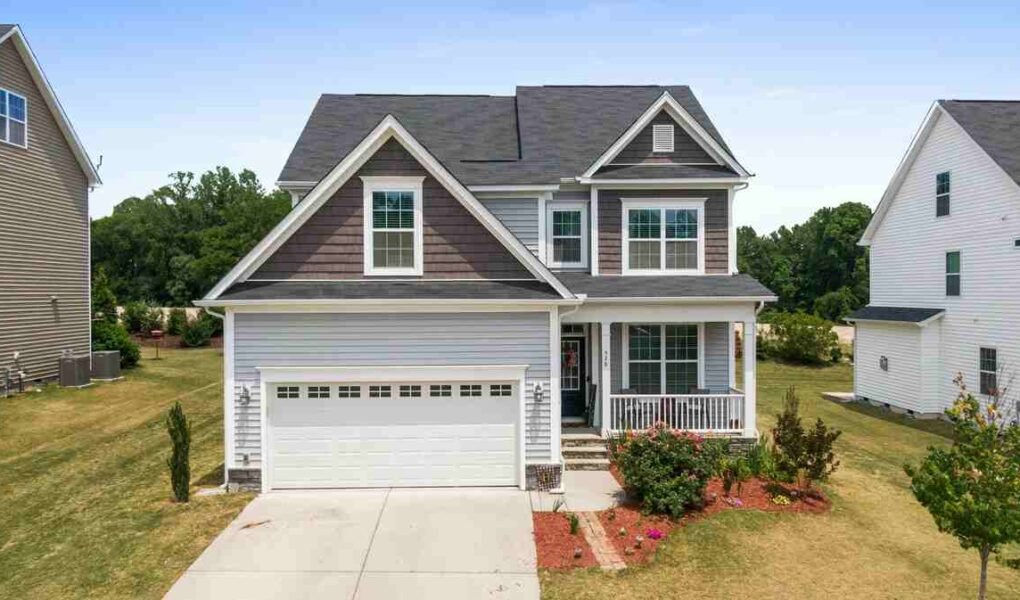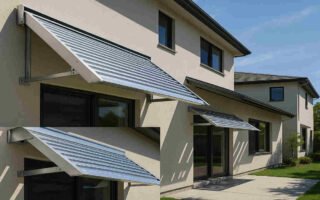Homes aren’t what they used to be, and thank goodness for that. You don’t need to live in a futuristic dome or spend a fortune to get a place that’s smart about energy and doesn’t throw a fit every time the weather changes. Today’s homes are built to think ahead, use less, and keep up even when the grid doesn’t.
We’re talking about setups that know when to cool down, warm up, back up, or power down with way less drama. It’s not about turning your house into a science lab but about small upgrades that do a lot more than people expect. From keeping rooms the right temperature to making sure the lights stay on during an outage, here’s what makes modern homes way more capable than their older counterparts.
Solar Cuts Grid Dependence
Plenty of regular homes are soaking up the sun and turning it into electricity, not just to cut down bills. Solar gives people options when the power company can’t keep up, and that’s a win all around.
Some homes even come with solar built-in now, which feels like a cheat code for energy savings. Add a battery to store that power for later, and you’ve got backup energy without the hum of a generator. Whether it’s running your fridge, keeping the lights on, or just knowing you’re using less from the grid, solar is one of those upgrades that just makes sense even if you’re not trying to save the planet.
Reliable Backup Power
Losing power used to mean lighting candles, hoping your phone had enough battery, and wondering how long the food would last in the fridge. Not anymore. A lot of homes now have backup generators that automatically kick in when the lights go out. The only catch? You’ve got to take care of them.
That’s where generator maintenance actually matters. No homeowner wants to find out their backup system doesn’t work, especially during a blackout. Professionals know what to check, what to clean, and what to replace before something fails. They catch the stuff you won’t notice until it’s way too late, like dead batteries, blocked fuel lines, or outdated software.
Zoned Temperature Control
Ever notice how one room in your house feels like the Arctic, and the other one’s a sauna? Zoned HVAC systems fix that. Instead of blasting the whole house with one setting, they let you control different areas separately. Do you want your bedroom to be cool and the guest room to be on standby? No problem.
This setup saves energy and avoids those thermostat battles where someone’s always too hot or too cold. It’s especially helpful if you’ve got a multi-story place or rooms that get more sunlight than others. Some systems even use motion sensors to figure out which rooms you’re using — no more wasting energy on empty spaces. It’s smart, simple, and way more comfortable.
Insulated Roof Materials
Your roof plays a big part in how your house deals with heat and cold. New roofing materials are way better at keeping things steady inside. Reflective shingles, layered insulation, and even cool-roof coatings are helping homes stay comfortable without making the AC or heater work overtime.
You don’t need a full roof redo to make this work, either. There are plenty of upgrades that can be added during basic maintenance. Less heat in the attic means a cooler house in summer. Better insulation up top means less heat loss in winter. It’s one of those fixes that doesn’t feel flashy but actually pays off year-round.
Live Energy Tracking
Gone are the days of waiting for your utility bill to figure out where all your money went. Energy tracking tools now let you see what’s using power in real-time. You can spot energy-hungry appliances and turn them off before they suck your budget dry.
Some systems even send you alerts when something’s acting weird. If your fridge suddenly starts using twice the power it usually does, you’ll know before it breaks down completely. It’s like giving your house a fitness tracker, and it actually helps you cut waste without changing much at all.
Motion-Triggered Lighting
We’ve all left lights on in empty rooms. Motion sensors take care of that for you. Walk in, and the lights come on. Leave, they turn off. It’s one of those simple upgrades that feels smart right away.
These aren’t just for front porches anymore. People are putting them in hallways, closets, bathrooms, and even laundry rooms. It saves energy and means no more fumbling for switches with full hands or in the middle of the night.
Remote Climate Access
You don’t have to be home to control the temperature anymore. With app-connected thermostats, you can tweak the heat or AC from your phone, whether you’re upstairs in bed or halfway across the country.
Are you heading back early from a weekend trip? Warm up the house before you walk in. Forgot to turn off the heat while you’re at work? Fix it in seconds.
Passive Cooling Features
Some homes are designed to stay cooler without relying on air conditioning all the time. Think of high ceilings, wide overhangs, shaded patios, or layouts that catch natural breezes.
Such features work especially well in warm climates where running the AC 24/7 would cost a fortune. Even in older homes, small tweaks like adding shaded outdoor areas or planting trees near windows can help bring down indoor temps.
Smart Window Coverings
Blinds and shades have gotten smarter, too. Now, they can open and close based on the time of day or how bright it is outside. That means less heat sneaks in during summer and more warmth stays in during winter.
Some models sync with your thermostat or smart home system. You don’t have to think about when to adjust anything, as the system handles it for you. It’s one of those updates that keeps things running smoothly in the background.
Climate-Friendly Landscaping
Strategically placed trees, shrubs, and even gravel paths can help with shade, airflow, and moisture control. Landscaping now works with your home to keep it cooler and more efficient.
For example, planting tall trees on the west side of your house can block harsh afternoon sun. Using ground cover plants instead of concrete can help reduce heat around the foundation. These choices add up, and your HVAC system gets to take a breather.
Modern homes don’t have to try so hard. With the right mix of smart upgrades and small changes, they can handle power outages, shift with the weather, and stay comfortable year-round. Whether it’s tracking your energy use, automating your shades, or just having a generator ready to go, today’s homes are designed to make things work without constant attention.
You may aslo read (designing a home that feels good all year not just when its new).




